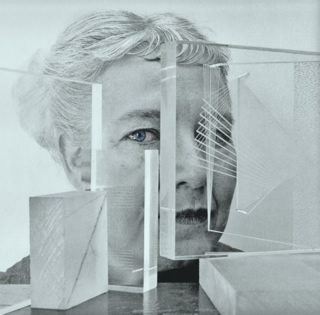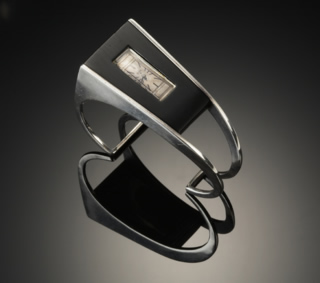Jewelry of Our Times
Jewelry can seem the most frivolous of arts, gaudily set gems designed to dazzle with their brilliance and reflection—and their obvious costliness—more than with their design.
 |
|
|
The San Francisco-based artist Margaret De Patta had a different vision. She saw jewelry as a fine art, like painting.
Moreover, she saw jewelry as a deeply personal art—expressing both the soul of its creator and the individuality of its wearer.
But to qualify as art, jewelry had to be an art of our time, based, she wrote, on "an awareness of the concepts, directions, and forces that characterize our 20th century way of life and too the implications of scientific discoveries."
De Patta, one of the first jewelers to call her work "wearable sculpture," helped revolutionize how people thought about jewelry.
She worked with simple materials—sterling silver, wire, metal screens, semi-precious stones, quartz, coral, topaz, malachite, pebbles from the beach, plastics, and epoxies—to create abstract designs that suggested Constructivist painting, biomorphic Surrealism, and the experiments in light and movement by the Hungarian émigré László Moholy-Nagy.
Her gems seemed to float because she set them into their metal supports invisibly. And, working with San Francisco gem cutter Francis Sperisen, she pioneered 'opticuts,' gems cut not to sparkle with reflective surfaces, but to lure the eye inside, into a tiny, intense world of shadows, movements, surprise.
"The fascination of looking into or through an object or material is boundless," she wrote. "Add the excitement of optical effects such as magnification, reduction, multiplication, distortion, and image reflection, and the function of the gemstone in jewelry becomes one to stimulate the ingenuity and imagination of the designer."
Her jewelry often incorporated movement, like an Alexander Calder mobile.
 |
|
|
To De Patta, jewelry was a social art in two senses. As wearable décor, it allowed a woman to display her sensibility. As Steve Cabella, a Richmond collector and dealer of modern design, says, "Square people don't wear her jewelry."
Her work was also socially conscious. She avoided working with diamonds. "I didn't like what they stood for," she told a reporter in 1950. "They always seemed to be a show of wealth."
And when the price of her work mounted so her friends could no longer afford it, she and her husband, educator and industrial designer Gene Bielawski, started a family firm, Designs Contemporary, to produce limited editions of her jewelry in her San Francisco home studio.
These production pieces, De Patta wrote in Arts & Architecture magazine, would be indistinguishable from her custom work.
Designs Contemporary, she told the San Francisco News in 1946, is "all tied up with my feelings about democracy. I want everyone to be able to afford my jewelry."
For a time it all went well.




